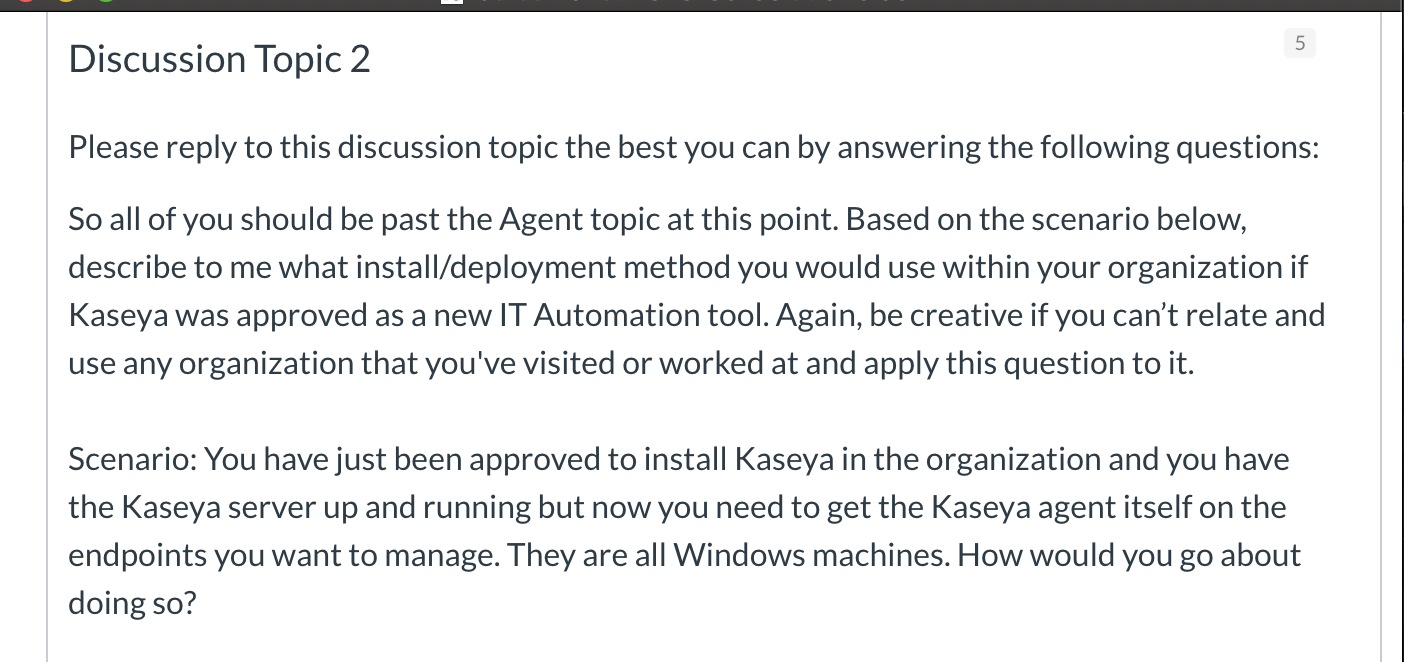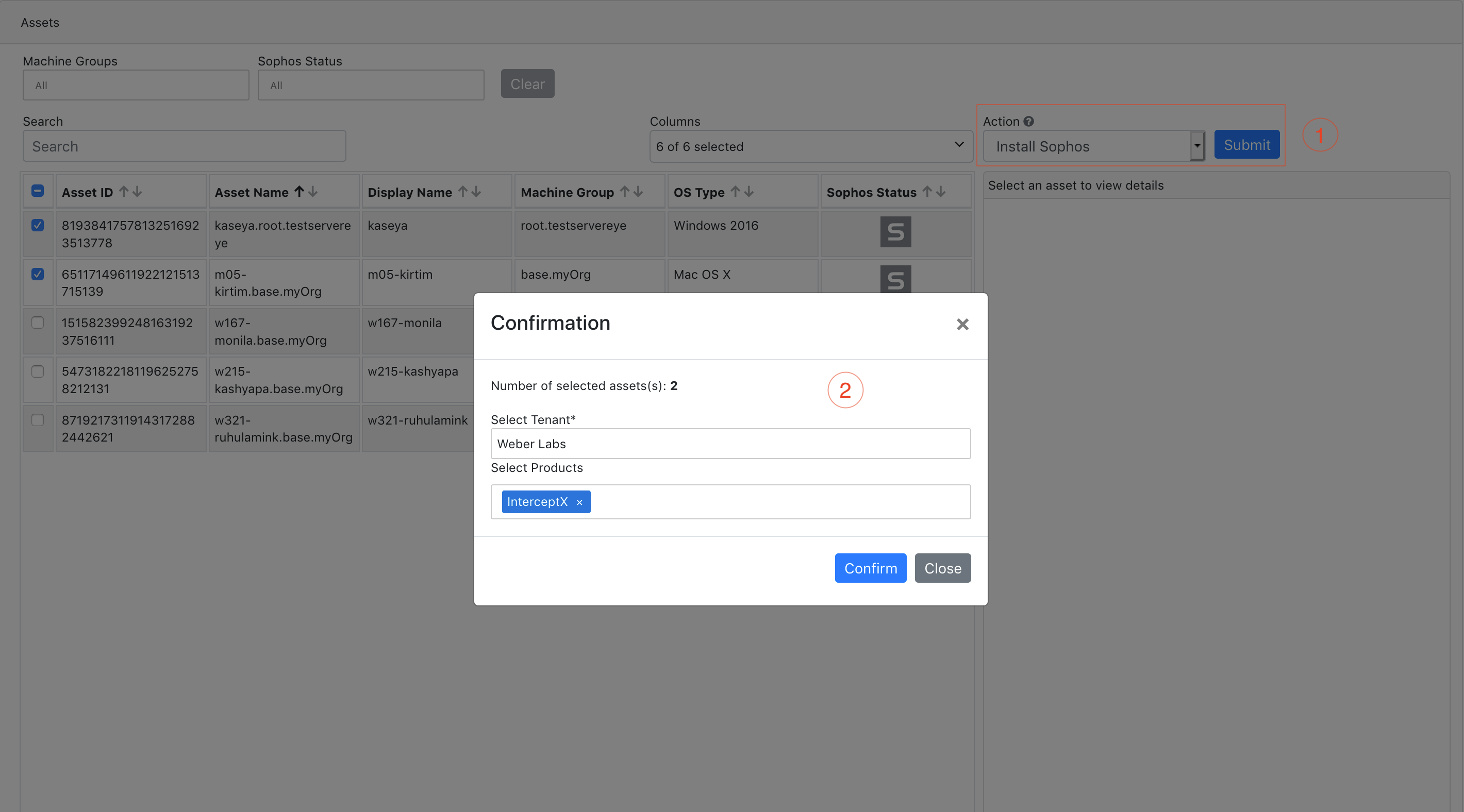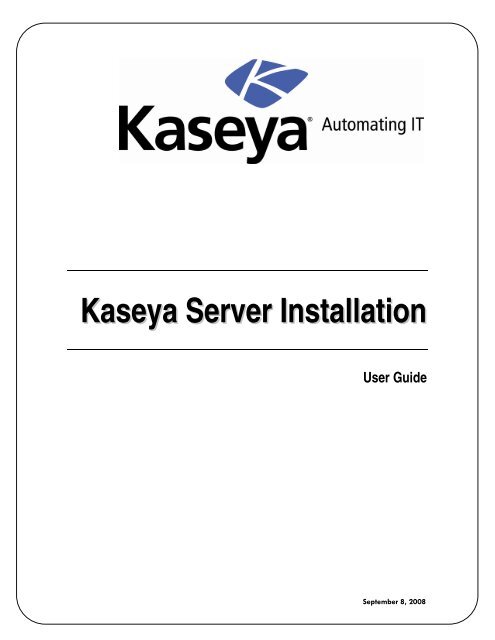

- How to install kaseya agent how to#
- How to install kaseya agent update#
- How to install kaseya agent Pc#
- How to install kaseya agent zip#
- How to install kaseya agent download#
We have tools that allow you to migrate to VSA by simply running an app and providing args for the VSA host and machine-group. If you're looking to selectively install an agent on a new computer, pull down the default installer and pass the machine-group parameter so it checks in directly.
How to install kaseya agent download#
This is why you shouldn't use scripts that download and execute the installer to perform agent updates. You don't need to specify an agent package.
How to install kaseya agent update#
Running the built-in agent procedure or the update task from the menu updates in place. Personally I might not bother doing all that, but the sky's the limit. Should be pretty hard to miss if your techs are trained to expect a specific desktop wallpaper being set to indicate the setup completed. Or get clever and have the script change something obvious like the desktop wallpaper after installing the agent and confirming the agent service is running.

If you have the VSA system tray icon visible after install, your techs could check for that, and if it's missing run the script manually. So it doesn't hurt for you to have a way for a tech to manually run the script. If the script runs during windows setup because you customized the image, and there's no network connectivity during setup, the agent can't be grabbed from your VSA. While you could technically make it work on a private isolated network, the bigger issue is not having any connectivity at all when the script runs. Lastly, I mentioned above that this depends on being able to download the agent over the internet. Maybe a group for all newly imaged agents?Īn interactive menu could work, but it'll be hard coded into your script, and you'll probably not want to put a huge number of groups to pick from (10 locations is probably fine, but if you've got hundreds or thousands of customers you wouldn't want all that hard coded into a deploy script). We also have a few special packages that put agents into specific groups, but we don't use them in any automated deploys. What we do is configure all new agents to go into one specific group that is a landing area where we triage and regroup agents into the correct groups. Aside from being hard to find, this could also mean policies and procedures are applied, depending on what you have setup.Īnyway the agent URL should be publicly available over the internet, so as long as the new system has an internet connection when it runs the script to download the agent you should be fine to get it to check in.
How to install kaseya agent how to#
To download this tool and receive directions for using it to resolve these errors, please visit Kaseya's Help Desk article at: How to Import Agent Procedures after 9.5.7a – Kaseya.The worst that could happen is a device ends up checking in for the first time to the wrong group. Kaseya has created a tool that will update the XML file to make it importable. Resolving a 1020 Error or a File was not uploaded message If the naming is not correct, please contact your Solutions Engineer for deployment assistance, or reach out to a Cyber Hero - you may require a custom script.Īfter a couple of minutes, your computers will show in the ThreatLocker Portal.We advise a single computer first to ensure your naming is as expected in ThreatLocker.Select all the computers you want to deploy to.You can filter to deploy a single company using the "Machine Group" dropdown list.Select the ThreatLocker Deployment procedure.The ThreatLocker Deployment procedure is now ready for use. Once updated, select "File", then "Save". The Unique Identifier is the key required. The Key is provided to you by ThreatLocker and can be found by navigating to the Computers page and selecting the "Install New Computer" button. Select Line 6, and replace the XXXXXXXX-XXXX-XXXX-XXXX-XXXXXXXXXXXX with your unique identifier from ThreatLocker ( ). Once imported, expand the ThreatLocker folder to view the two new deployment scripts. Right-click the procedure, and select "Edit Procedure". Upload the XML file (use the camera icon to search) and then select "Save". Under the "Private" folder, select the "myProcedures" folder. Navigate to "Agent Procedures" > "Schedule /Create".

How to install kaseya agent Pc#
Note: We advise running this against a single PC first as the naming convention in Kaseya can lead to unexpected results. It will also place the devices into either the Workstations or Servers group in ThreatLocker dependant on the operating system. The script will attempt to match your clients in Kaseya to your Organizations in ThreatLocker, and will create a new Organization if it doesn't match.

This article will cover the steps to import the ThreatLocker Deployment script into your Kaseya VSA instance.
How to install kaseya agent zip#
Download the latest version of our deployment scripts here Note: Export the XML file from the downloaded ZIP Overview


 0 kommentar(er)
0 kommentar(er)
